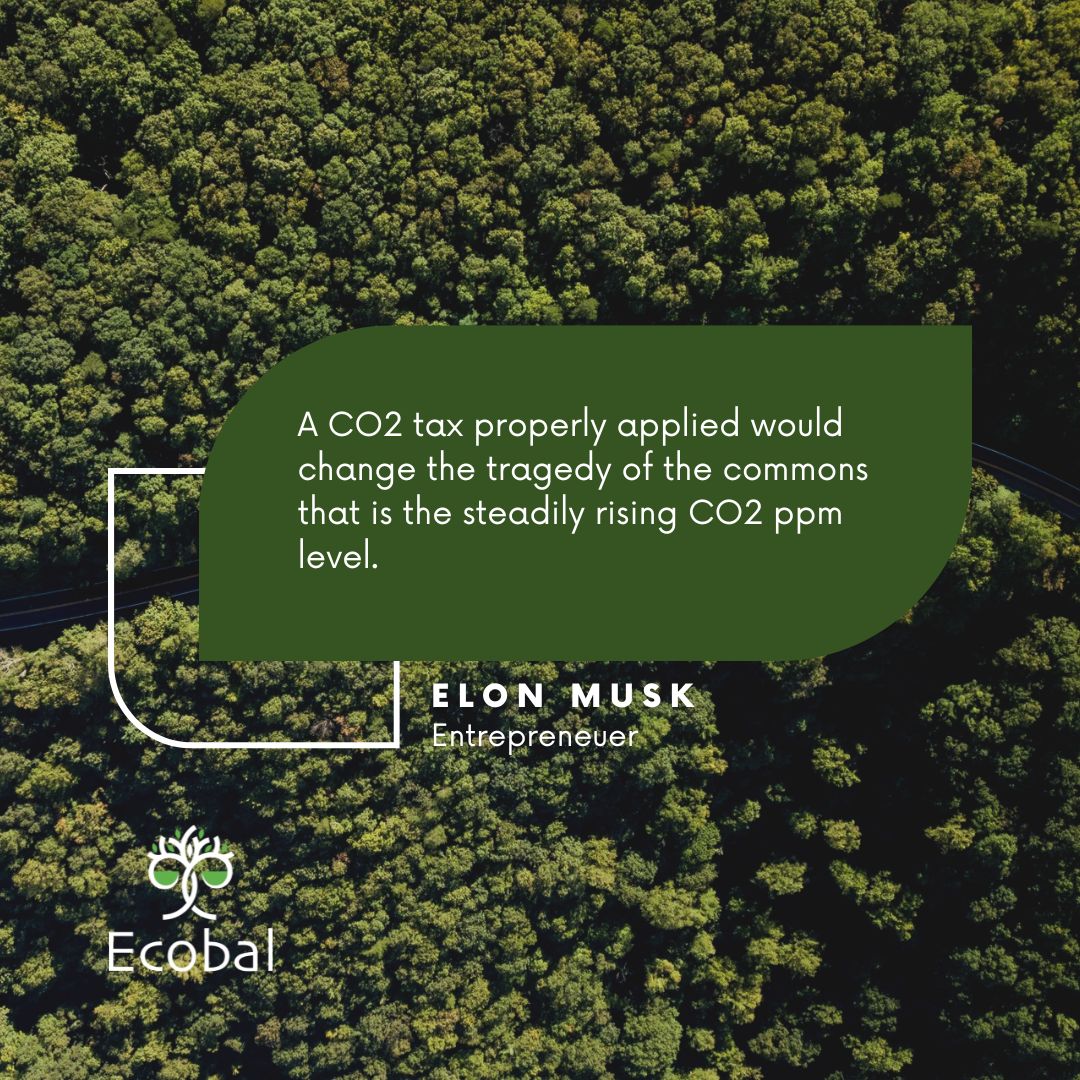The Impact of a CO2 Tax on Mitigating the Tragedy of the Commons in Atmospheric CO2 Levels
Elon Musk recently brought attention to the need for a CO2 tax on his X page, stating:
“A CO2 tax properly applied would change the tragedy of the commons that is the steadily rising CO2 ppm level. If we’re going to tax anything then we should prioritize taxing the potentially bad over the potentially good as we do with alcohol & cigarettes over vegetables & fruits. I disagree with those who view the climate risk as catastrophic in the 5 to 10 year range but the long-term risk is very real even if one simply considers quality of life at a given CO2 level. The indoor CO2 ppm level is significantly above the outdoor average. This means ~800ppm for ~400ppm ambient. Above 1000ppm people are noticeably negatively affected. Above 2000ppm it gets really painful.”
The “tragedy of the commons” is a concept that illustrates how individuals, acting in their own interest, can overuse and deplete a shared resource, ultimately harming the collective. This idea is particularly relevant when we look at the ever-increasing levels of atmospheric CO2—a key driver of climate change. A CO2 tax could be a powerful tool to mitigate this issue, creating financial incentives for reducing emissions. This article delves into how a well-applied CO2 tax could help curb rising CO2 levels, compares this tax to those on alcohol and cigarettes, and explores the long-term risks of high CO2 concentrations, particularly on indoor air quality and human health.
The Science Behind CO2 and Climate Change
CO2 is a well-known greenhouse gas that traps heat in the Earth’s atmosphere, contributing to global warming. Since the Industrial Revolution, human activities—like burning fossil fuels, deforestation, and industrial processes—have drastically increased the amount of CO2 in the atmosphere. As of 2024, the global average CO2 concentration has surpassed 420 parts per million (ppm), a significant rise from pre-industrial levels of approximately 280 ppm.
This increase in CO2 enhances the greenhouse effect, leading to higher global temperatures, altered weather patterns, and more frequent extreme weather events. These changes threaten ecosystems, biodiversity, and human societies, making it critical to address the root cause: excessive CO2 emissions.
Implementing a CO2 Tax: Economic and Environmental Benefits
A CO2 tax is a type of carbon pricing that charges a fee based on the carbon content of fossil fuels. The idea is to internalize the external costs of CO2 emissions, making it financially beneficial for businesses and individuals to reduce their carbon footprints. By increasing the cost of carbon-intensive activities, a CO2 tax can drive investment in renewable energy, energy efficiency, and low-carbon technologies.
Taxing CO2 emissions is conceptually similar to taxing alcohol and cigarettes. These products are taxed because of the harm they can cause to individuals and society—alcohol can lead to health problems and accidents, while smoking is a leading cause of respiratory diseases and cancer. Likewise, CO2 emissions contribute to climate change, which has long-term negative effects on the environment and public health.
Taxing harmful activities is a way to discourage their use and offset the costs to society. Just as taxes on alcohol and cigarettes aim to reduce consumption and fund healthcare, a CO2 tax would aim to reduce emissions and fund climate mitigation and adaptation measures.
The Long-Term Risks of Elevated CO2 Levels
While some may downplay the immediate risks of climate change, the long-term dangers are real and significant. These include sea-level rise, loss of biodiversity, and negative impacts on agriculture and water resources. Even if catastrophic events do not occur within the next 5 to 10 years, high CO2 levels could still lead to a deterioration in quality of life.
Indoor CO2 levels are often higher than outdoor levels because of human activities like breathing, cooking, and heating. In poorly ventilated spaces, CO2 concentrations can easily exceed 800 ppm, even when the outdoor level is around 400 ppm. Research has shown that indoor CO2 levels above 1000 ppm can impair cognitive function, decision-making, and overall comfort. Levels above 2000 ppm can cause headaches, dizziness, and other symptoms associated with poor air quality.

Why It Matters for Ecobal
At Ecobal, we are committed to staying at the forefront of technological advancements in CO2 sequestration. By integrating cutting-edge technologies such as ultra-fast CO2 hydrate formation, we enhance our efforts to transform former agricultural or barren lands into thriving ecosystems. This ensures that our projects not only effectively sequester CO2 but also contribute to sustainable practices and environmental restoration.
Ecobal’s Mission🌿:
- Raise awareness and establish authority to certify the ecological health and capacity of rural and natural landscapes.
- Monetize ecosystem services to demonstrate the economic value of nature.
- Use natural ecosystems as efficient carbon sinks for CO2 sequestration.
- Manage soil microbiota and fauna to improve soil health and ecosystem functionality.
- Restore biodiversity through the reintroduction and conservation of native species.
Learn more about our mission and initiatives here: Ecobal
About the Author
Amsalu Milkias Misebo, Ph.D., is Ecobal’s CO2 Project Specialist with a distinguished background in restoration ecology and sustainable land management. His research on carbon sequestration and land restoration is published in leading journals such as Sustainability and Land Degradation & Development. Amsalu’s work on reclamation technology and plant cover significantly advances our understanding of environmental science. Discover more of his research on ORCID and ResearchGate.


